It was slightly late for Valentines Day, but I thought that going with Lewis to Milan was a wonderful idea. Crossing the Atlantic Ocean, we flew aboard Emirates Airline, which is owned by the government of the United Arab Emirates—an elective monarchy formed by seven sheikhs. (Before the UAE of 1971, each sheikdom allied with the United Kingdom in 1820 to be a British Protectorate). Established in 1985, it is the largest carrier in the Middle East and is known for its wide aircraft.
Once on the plane, we were discontented by the lack of legroom or elbow room. One of the e-sockets didn't work, so we couldn't charge our iPhones at the same time.
As we soared over the English Channel, we were served an in-flight meal that was substandard. Unlike our recent flight on British Airways—that served three servings of wine—Emirates only gave one. After the drinks trolley passed and the food trolley came, I saw bottles of wine on it and politely asked for a second cup to accompany my dinner. The flight attendant replied, "I see that you already have one." Abruptly, she turned away and left me.
The plane crossed the European continent from north to south. By the time that we flew over the Grand Duchy of Luxembourg, we were asleep. Breakfast was less impressive. As we arrived in Northern Italy, the flight crew abruptly snatched our blankets and requested that we give them our pillows and headphones. It was as if they didn't want to clean the plane after the passengers left. So we spent the last 30-minutes of the plane's descent without those "comforts". We landed in the Italian Republic's Lombardy Region, in the Varese Province...
and that's when the Italians ensured that things improved for everybody.
Milan Malpensa Airport is Italy's second-busiest airport and the 20th-busiest in Europe, and it outclasses the 12 airports I experienced in The States. 40 kilometers from Switzerland, it has an impressive view of the Alps mountain range.
Begun in 1920, the international airport is well-equipped.
Instantly, my cellular service was operational.
Like any proper airport, it has an integrated railway link to the city. Opened in 1999, the Malpensa Express transports people from the airport to the city's central train station.
No train in the huge USA is as new as that... and none of NYC's airports have railway connections to the city.
Previously using the lira, Italy's currency is now the Euro. For €20, we bought roundtrip tickets for the Malpensa Express. Rolling along at 87-miles-per-hour, it is slower than Italy's world-renown "speed trains"... and yet faster than most American trains. Wisely, we used the 50-minute travel time to review Lewis' Italian Language book!
We entered Zone 9 (0f 9) of the Metropolitan City of Milan.
Formerly called a "province", the area is called a "metropolitan city" (surrounded by boroughs and zones), and the City of Milan is its capital. Just as we saw in China, certain metropolises in Italy are self-governing as special types of provinces. Italy has 14 of those. Milano was formerly the Duchy of Milan, from 1395 until 1796.
Our train chugged into Milano Centrale, which is the city's central train station. The first version was built in 1864, and King Victor Emmanuel III laid the cornerstone for this one in 1906. It handles the largest volume in Europe. We disembarked and were wowed with the architecture. Compared to America, it was uplifting to be in a sunlit train station, full of skylights!
It is a grandly-designed terminal with lofty ceilings, expansive halls, walls covered with sculptures and friezes, Art Moderne lights, and beautifully-tiled mosaics on its floors.
Seen below, NYC had a similar skylit station by the best architects, McKim, Mead & White, in 1910...
...but it uncaringly demolished it to build an ugly stadium...
...and it stuffed the overcrowded station under it for 60 years.
We were there after Milan's typical commuting time, so the gorgeous station was easy to navigate through.
There are many exits, and we headed west to our hotel. Streetcars were available, but we didn't need them. Milanese folks love their history, so some trams are preserved from the 1920s and share the rails with modern ones.
Once again, Lewis used Booking.com to choose a handsome hotel that met our requirements.
The Milano Skyline Foresteria Lombarda Hotel was a short distance from the station. In fact, it was on the same street! Conveniently, a Metro station was on the corner (for that day's adventure), and the hotel provided a complimentary buffet breakfast, each morning. Situated inside a historic building from the 1920s, the hotel occupies the third floor.
We rode up in the cozily-sized elevator (small due to the historic space of the original that could not be enlarged).
*In Europe, the ground floor is labelled "Zero", whereas Americans call that "First Floor". So, if your destination in Italy is on the "Third Floor", you must go up four flights of stairs.
We admired the swooping spiral staircase, with streamlined underside and fanciful banister.
Notice the unique-shaped brackets on the steps, and the various spindles of the banister!
The Art Moderne windows kept each landing looking bright. Red carpets adorned the entranceways in regal ways.
Entering the hotel, we realized that its cozy size accommodates several guest rooms, with a breakfast room and reception office. The cheery receptionist sweetly got us acclimated. The way to say Please, Thank You, and You're Welcome are Per Favore, Grazie (Grat-see-ah), and Prego.
The clerk was a polite woman who got us checked-in efficiently. In Italian, Lewis' name is "Luigi". My named doesn't translate, so it remained as "Kenneth"; it originated with ancient Gaels to mean "handsome lord born of fire". "Lewis" has Frankish-Germanic origins to mean "loot-carrying warrior". Unlike how Americans anglicize foreign names ("Salvatore" becomes "Sal"), Italians were never tempted to say "Luigi", instead of "Lewis". They always said Lewis.
Our sunny room had a king-size bed, a swanky shower, and a balcony with lovely views of the city's modern skyline.
After our lackluster flight (which should've been better in so many ways), we savored soothing showers via side sprays, waterfall spout, handheld wand, and deluge feature! A towel warmer was a welcomed treat.
Wonderfully, the shower resembled this...
The affordable cost of our hotel room was €80 per night. We were thrilled. We were also impressed that the bathroom contained a bidet. Almost every lavatory that we saw in Italy had a bidet... which is still only considered a luxury in the USA. We enjoyed using them, and they reminded us of our journey through Japan and our hotel in Finland.
This is a perfect moment to praise all of the attentive service and courtesy that we received from EVERY Italian—and every employee working in Italy. In the USA, naysayers criticized Italians for being racially discriminatory to Asians (still due to the pandemic). With a typical "fear of everything", Americans also warned about anti-gay attitudes in Italy. Those accusations are false. Lewis always received pleasant and attentive assistance from people. Everyone we encountered (at bars, eateries, shops, and on public transportation) acted normal to us: a gay interracial couple. Hooray for Italian hospitality.
Refreshed, we walked to the corner and entered the subway station.
During our entire time in Italy, we never needed a car. Brainwashed from their "car culture", Americans may want to drive themselves everywhere... but cars are not needed. It is better to use the marvelous public transit and your own two feet. Most Italians eschew vehicles in cities because Italy's public transportation is sufficient. Milan's well-connected Metro system looks like this. Unlike NYC (America's biggest city), their system has interconnected loops so you can truly get around the city... instead of going back the way you came and starting on a new route.
It was easy to buy tickets from a machine, due to the option for "English language".
Our plans didn't necessitate a Day Pass, so we bought four individual rides. Instead of turnstiles—that smear things on your clothes—Italy's trains and Metros use glass gates that open when you show your ticket or e-ticket. Unlike Japan, the machine doesn't eject your ticket at the other end; it ejects it where you entered it. After we passed through the gates, the machine beeped, but we didn't comprehend why. A helpful transit worker exited his booth to explain (in broken English) that we should take our ticket back from the machine before passing through the gates. He informed us that when riders get to their destinations, they insert their tickets into the exit gates (or show their e-ticket) to register how far they travelled. He was so helpful that he also gave us directions for which direction of the Metro route went to the world-famous cathedral. That is where we headed.
Hugely unlike NYC's decaying subways, Milan's Metro stations are artistically decorated with geometric patterns, sculpted corners, a yellow ceiling, and colorful floors.
Compare that cleanliness to the slovenly Metropolitan Transit Authority of NYC.
In this video, you can hear the irritating sounds that are emitted by the malfunctioning lights. (And that is at Fifth Avenue: the city's so-called "premier" area).
Boasting a type of modernity that is unseen in NYC, they have television monitors mounted along the platforms, and digital signs inform you of how close the next trains are. NYC's deceptive signs say "Next train is 10 minutes away", but that is a lie whenever the train fails to move for 20 minutes. In Italy, the signs include any delays and accurately tell you when the next train will arrive. Seemingly miraculous to riders of NYC's subways, Italy's Metros are always on time—within a few minutes of their scheduled arrivals. If they become late, they responsibly speed up to regain any lost time. That rarely happens in New York City. Consequently, Italian passengers are rarely rushed, exasperated, or stressed about their commutes/rides. If you wonder why Italy has a happy population, that is one of the reasons.
At home, Lewis and I commute on a main-line of NYC's MTA Subway that still uses trains from 1975 (before we were born). They are dirty, drab, and poorly lit.
Compare that to the modern fleet of trains on Milan's Metro.
The trains are openly connected from front to back, which helps people spread out and avoid congestion. In contrast, NYC's overfilled subway cars are not open to each other, and it's illegal to cross between them. We were impressed with the cleanliness of the Metro and that riders were always orderly and mindful. We never saw a beggar aboard the trains, nor did we notice any inside the stations/corridors. In NYC, hoodlums feel emboldened to do (disruptive) breakdancing on trains and scream at passengers who don't give them money. That never happened in Italy. Better manners and the presence of police prevented it.
We ascended at the Piazza del Duomo.
For us, it was surreal to be in a 57-degree temperature in February. Milan is farther north than New York (a higher latitude of 5-degrees), and it is a higher elevation, AND it is within proximity of the snowcapped Swiss Alps.
Yet, NYC is much colder. It suffered typical 23-degree frigidness—with the windchill making it feel like 3-degrees! So, while we enjoyed mild weather in northern Italy, New Yorkers were so frozen that nobody could endure being outside on train platforms (so they hid inside the stairways).
It was lunchtime, and we craved our first taste of Italy's culinary perfection. We strode into the Galleria Vittorio Emanuele II, named for a former King of Italy. Built in 1865, it is the world's oldest shopping gallery, and it was the forerunner to use iron-glass roofs for retail.
In addition to the lofty glass-enclosed ceiling, the mosaic floors are impressive, too. Sections are devoted to other prominent Italian cities. We recognized the ones for Florence and Rome, which we intended to visit soon.
We were famished, so we sought a place to eat. Lewis chose Motta Milano, and we lunched there. Founded in 1928, the chic restaurant remains popular.
All eateries, boutiques, site-seeing attractions, and museums checked everyone for COVID vaccination statuses; they wanted to see proof of both dosages and (preferably) the booster shot. Italian citizens use a "Green Pass", which can be scanned from their mobile devices. Our New York State certificates were not compatible and could not be scanned, but we always showed them (due to their official status) and then showed images of our Vaccination Cards from the Center of Disease Control (CDC).
Motta is a stylish restaurant inside the Galleria. It has an "open air" seating area, but it enclosed it during the winter months. Not merely a tent or awning, the restaurant invested in semi-permanent walls, windows, and doors. The ceiling was covered with fabric, and it had modern lighting—with spotlights that softly illuminated the center of each table. The interiors of the restaurant and its bar were spiffy, too.
In Italy, tap water is not drinkable, so everyone uses bottled or filtered water. Some restaurants provide their own filtered water, but some only sell bottled versions. Instead of "sparkling", we purchased "still" mineral water that is bottled by Acqua Panna in Toscana (Tuscany).
Our waitress was Milanese, and she was excited to have two New Yorkers who traveled all the way from the USA to visit her hometown. With graceful exuberance, she guided us through the menu. Lewis and I started with oven-fresh rolls dipped in exquisite extra-virgin olive oil. (During our trip, the olive oil that we consumed was always harvested and pressed locally or from a nearby province). As an appetizer, we ate octopus tentacles with cherry tomatoes and smashed potatoes.
From the menu, Lewis selected Shrimp Ravioli, made with freshly-harvested shrimp that were minced and stuffed into handmade pasta that was rolled, cut, and crimped.
Throughout Italy, it is considered normal to get handmade pasta at restaurants. I ordered Spaghetti Carbonara. The sauce was not pre-made; it was made "from scratch" when we placed our order. Italians scoff at the American invention of Alfredo sauce: made with inferior industrial-produced cheese (or "cheese products" from the USA's corrupt Dairy Industry). Carbonara sauce is truly creamier. When it was presented, its aroma was mouth-watering, and it tasted absolutely scrumptious! A fagiolo! The detrimental ingredient is guanciale.
Despite having thousands of Italian restaurants, Manhattan only has two that use authentic guanciale (pork cheeks and jowls that are rubbed with salt, pepper, fennel, and garlic and are cured for three weeks) in that recipe. That is shameful. The ingredients are available anywhere that pigs are slaughtered, so it's indicative of ignorance to make the recipe inferiorly.
Here is an amusing video about how to pronounce that pasta.
Every forkful was heavenly! To accompany our meal, we sipped glasses of Lugana. It is a type of wine made from locally-grown Trebbiano grapes, with flavors of Alpine herbs, fennel, and citrus. Across Italy, it is de rigueur to consume pasta and wine on a daily basis. Wine is considered part of the meal—just like vegetables. Just like the locals, Lewis and I ate pasta, each day. Daily, we drank wine. Despite the repetitive consumption of pasta, pastries, and homemade bread, you rarely see an obese Italian. When food is made with wholesome methods and wholesome ingredients, it is healthier. Be mindful that portions of pasta are just like our photo; they are not oversized American sizes. Pasta is never an entire meal; it is part of a meal.
The cost of each food item was €18. The price included tax, so there was no additional tax or gratuity added to the bill. Italy has a non-tipping culture. People who proudly work as waiters, bartenders, and baristas are paid a "living wage"—and given Universal Healthcare—so they can live on their salaries. They are not underpaid like American ones, who rely on tips to survive. Restaurants in Italy might have cover charges, in lieu of gratuities. If a server is exemplary, it is okay to give a gratuity. However, twice when we tried to do that, the servers gave it back to us, assuming that we left the money by mistake.
Italians "burn calories" by walking and bicycling on a regular basis. Using that methodology, we went for a stroll after our meal. The ebbing daylight gave an orange hue to the magnificent masonry, and it illuminated the mall richly.
In fact, Lewis and I walked around Italy so much that we averaged 9 miles per day. Exceptionally, we strolled "above" the city. That's correct. We walked on the rooftop of the cathedral!
Patrolmen (in uniforms that reminded us of British constables) gave us directions to the Ticket Counter to enter the cathedral.
Nicknamed the Duomo of Milan, construction began in 1386. It is the largest Gothic church in the world, and it is a UNESCO World Heritage Site. Making it world-renown, it is festooned with every type of pilaster, statue, frieze, gargoyle, and ornamentation.
The roof was finished in 1682. We purchased admission tickets that entitled us to explore the interior, ride an elevator (instead of using 400 steps) to the roof, walk around the rooftop for as long as we wanted, and also visit the cathedral's museum. The narrow elevator carried six people (including an usher). Then, we ascended a set of well-worn marble stairs.
Suddenly, we faced unbelievable artistry and craftsmanship. Flying buttresses formed graceful arches, and we peeked at statuary through them.
The view of the skyline is wondrous!
Carved by human hands, the stonework was substantial yet delicate and airy! 3,400 sculptures adorn the cathedral, and many seem precariously perched on pointy pedestals.
Like Stonehenge, sunbeams formed silhouettes between the spires and towers. We marveled at the intricate stonework that formed pinnacles, towers, gargoyles, and archways. Thousands of embellishments were all carved/chiseled by hand, centuries ago. It was almost magical to admire them up-close!
The mythical gargoyles were especially gruesome as mutant beasts.
Ongoing restorations showed us the brilliance of the marble's original patina.
Being amidst a towering "forest" of chimneys, spires, and doorways...
Perfectly timed with the sunset, we reached the apex and stood on the roof of the nave.
215-feet above the city, it was truly another type of "wilderness" that usually only birds see. A "bird's eye perspective" fascinated the Italian genius, Leonardo Di Vinci, in 1488. (Nearby, there is a museum of his futuristic inventions).
How many people want to share a sunset on top of a cathedral? We do! Just like our visit atop the Great Wall of China, we met people from other countries. A young fellow from the Hashemite Kingdom of Jordan asked us to take his photograph in the sunset. He wished us a great trip. We also encountered folks from Britain, Germany, France, and China.
We decided to use the remaining daylight to view the cathedral's stained glass windows. So, we descended the spiral staircase—imagining the exploratory monks, mischievous altar boys, and conspiring priests who tread on them before us. The medieval window-slits gave it a castle-like effect.
Thousands of hand-cut panes of glass shimmered with richly-hued colors. They are the tallest stained glass windows in the world.
The pipe organ played, and that gave an appropriate ambiance of reverence. Turn the sound on and enjoy my short video of it...
Resembling redwood trees, forty thick columns soared 80-feet overhead, showcasing the tremendous height of the nave.
*To see when we visited the largest cathedral in Ireland (during the following February), please use this link:
By the time we arrived at the museum, it was dusk, and the fading light was matched by illumination from the ornamental buildings surrounding the piazza.
Despite being a religious museum, its artifacts depicted a lot violence. I suppose that is transparency for the chronological atrocities of the Catholic Church... and its methods to frighten believers into repentance.
The exhibits were awe-inspiring due to their scope. In the first two photos, Lewis posed... subtly peeking at the viewer, like characters in medieval paintings sometimes do!
An impressive part was the salvation of a 1336 chapel, which was restored to its original colors and styles.
It was built for Azzone Visconti's palace near the cathedral. He is deemed to be the founder of Milan. After fighting his uncle for control of Milan, he bought the "right to rule" from Louis IV (King of the Romans and then Holy Roman Emperor), but he double-crossed and only paid one-fourth of the sum. In retaliation, Pope John XXII acted on behalf of the emperor (whom he appointed / crowned) and diminished Azzone's power. Blamed as an assassin in two political attacks, Azzone evaded penalties... but died of gout.
In another section, we encountered a monumental model of the cathedral. I'm sure that it succeeded in wowing investors to donate to its completion. You get a gist of its size by seeing Lewis in the right side of the first photo.
The last depiction reminded us that it was time to have cocktails! :-)
As nightfall draped the city in darkness, the natives promptly left their jobs (Life/Work balance is hugely important in Italy) and joined friends for Aperitivo. Aperitivo means "Pre-meal drink", and it also means the time to start an evening with apéritifs. "Happy Hour" was invented in Milan. The world can thank the Milanese people for it!
Before our trip, Lewis arranged for us to dine with his friend who lived in Milan. Her name was Tyler, and she relocated there from the USA. I was asked to choose the restaurant, and my research led us to De Ros. It was not far from the piazza, and it was near the tram route that Tyler used. It is also adjacent to a historic fountain: the first of many Italian marble fountains that we saw.
Arriving at the restaurant early, we inadvertently interrupted the staff's meeting. However, instead of making us wait outside until their opening time, they immediately ended their meeting, stood to welcome us, and dispersed to their duties. We assured them that they could finish whatever they were doing, but the chef and the owner insisted that we experience their dining room "as it should be". The room is classy: blue velvet pillows on blue velvet baguettes, crisp white linens, a petite bar, a glass-enclosed kitchen, and mezzanine seating via a polished wood staircase.
The owner was a warm-hearted gentleman who guided us through his extensive menu... and wine list. We were his first customers of the night (in Italy, restaurant clientele tend to arrive after 8pm).
Another significance to life in Italy is that meals are never rushed. Italians scoff at Americans who cram food down their throats while rushing to be overworked, or who shorten their lunch-breaks to do more work. Italians do not follow the American habit of eating TV-dinners while watching TV. Meals in Italy are languid, and they follow a routine. Breakfast is hearty, and it is more savory than sweet (unlike America's over-sugared breakfast foods). That is the only time that an Italian might drink a cappuccino. Mid-morning is marked by a second espresso. Lunch is the biggest meal of the day. It consists of unalterable courses: antipasto, primi, secondi, dolce. Afternoon snacks consist of tea/coffee and pastries. Cocktails are served at 5pm. Dinner consists of a procession of courses, similar to lunch. Antipasto is designed to whet your appetite, and it involves cured meats, excellent small-batch cheeses, salty condiments, and olives/cornichons. Primi is usually a type of pasta. Secondi is either seafood or meat with vegetables, and it is the "main course". Dolce is dessert. That is followed by sipping a digestivo: grappa, herbaceous cordials, or a liqueur.
When eating a meal, bread is usually accompanied by extra-virgin olive oil, in lieu of butter. The chewy bread soaks up the locally-harvest oil perfectly, and its sturdy crust is handy to scoop up any residual sauce from your plate.
Our dark-skinned waitress uncorked a bottle of Vermentino, and she let it "breathe" (no aerator needed) before pouring it. Lewis and I prefer to taste "local specialities", and that wine is produced in Northwest Italy and along the Tyrrhenian coast of Tuscany. Our wine was enhanced by malolactic fermentation in oak barrels. We recommend that you try a bottle. :-)
By happenstance, Tyler arrived when it was time to pour the wine. Thrilled for the reunion, we toasted and said "Brindiamo" as we clinked our glasses together. That means "Let's toast".
As a peninsula surrounded by seawater, Italy is a premier place to consume seafood. We love that. The owner urged us to have the freshly-caught sardines, which were tasty.
Being the most convivial customers, we were rewarded by the owner with complimentary glasses of Limoncello. We love it! Produced on the Amalfi Coast, the digestivo is made from the zest of juicy lemons (steeped in simple syrup)... and all the sunshine from Southern Italy!
Other diners came and went, and the restaurant was always half-full. Finally, the clock achieved a late hour, and it was time for Tyler to go home. (She lives near a canal on the south side of the city). When it was time to pay the bill, the server did not carry away our credit cards. As always in Europe, she brought a portable credit card readers to us, so our cards were never away from us. That is a sensible security precaution.
None of us understand why American businesses resist that technology, especially when faced with some of the highest rates of identity theft and credit card fraud in the world.
We escorted Tyler to the tram stop. (In New York, Chicago, or San Fransisco, you wouldn't dare enter a dark alley. But the ones in Italy are safe—which is indicative of the culture).
Milan utilizes historic trams alongside its modern fleet.
A full moon shone in the sky, and the city's ornate streetlamps brightened the cobbled streets like giant candelabra.
Nearby, Lewis and I boarded the Metro and exited at our hotel. Despite the late hour, the stations and train were void of homeless people, drunkards, or troublemakers... which gave our night a nicer ending than countless nights in Manhattan.
The small hotel doesn't employ staff at night, so guests are given keys that let them into the building and into the hotel's foyer. We didn't need staff at midnight, so that was fine. We opened our French doors, sat on the balcony, and reveled in the view... and the quietness! Within proximity to skyscrapers in NYC, you don't enjoy peacefulness. That was a treat! No angry car horns, blaring car stereos, never-ending car alarms, thugs screaming, or outdated construction trucks rumbling non-stop. It was the perfect ending to a perfect day.
Adjusting to the new time zone, I awoke early—happy to be in the glorious peninsula-nation. Sunlight streamed into our room.
Lewis awoke and opened the French doors to admit a fresh breeze. Just then, the church bells from Saint Augustine (on the next street) chimed to welcome the morning. Listen to them in this video...
I overheard the staff setting up the daily breakfast buffet. A delightful convenience of the cozy-sized hotel was that our room was merely across the hall from a sizable breakfast! Here is my video of it!
The refrigerator was still well-stocked with more! That is an investment in quality! (Not pre-packaged, cheap, "junk food".)
That is a super value for two people at only €80 per night.
A young woman greeted us and introduced herself as the attendant. She asked if we wanted toast. She gestured to the freshly-baked bread that was delivered daily to the hotel. Italians eat crusty bread on a daily basis. When we agreed to have toast, she volunteered to doing the toasting for us. Next, she invited us to have coffee (even though our room was equipped with an espresso maker). Incidentally, "coffee" in Italy typically means "espresso". If you want American (drip-style or percolated) coffee, you must request an Americano (which Italians disparage). I accepted the offer of an espresso, which she promptly made. She brought it to me in an appropriately-warmed cup/saucer with an appropriately-sized spoon. Such details are important to Italians, and they are valued by us, too. The foam (crema) was perfect: hue, thickness, and bubble-size! The flavor was unbeatable! Lewis ordered a cappuccino, which the young woman prepared efficiently and presented with a masked smile. Such service was commendable.
We ate on our sunny balcony. It was great!
After another wondrous shower, we checked-out and ambled down the street to the train station. The morning traffic was light—despite the proximity to the city's huge Central Train Station.
In The States, that time is grievously nicknamed "Rush Hour" due to the hurried anxiety that drivers/commuters endure each day. In Italy, we never saw anyone running through the street for a train, nor did we see anyone shoving through a crowd in a frenzied effort to get somewhere. First, there are no crowds because the city's public transportation is plenteous and on-time. Trams, trains, buses, and the Metro carry citizens around the city effectively.
When public transit is on-time, crowds do not accumulate. Therefore, people don't feel compelled to be aggressive to get on a tram or bus or Metro—fearful that the next one will be 30-minutes late. With efficient public transit, there are less cars on the roads, so there is less chance of traffic jams or congestion. Many Italians prefer to use cycle paths to get to their destinations... which is another smarter choice, instead of vehicles.
It was heavenly to enter the grandiose entrance hall, with sunshine streaming through its skylights and arched galleries. Shops and kiosks were located throughout the space. We always admire ways that magnificence is benevolently given to public spaces. How can you be unhappy to start your day in such a place? Impossibile!
Inside the vast station, it was easy to buy tickets for the upcoming train.
Italy's transit websites discourage riders from buying tickets in advance, and there is no financial advantage. Ticketing machines are plentiful, and trains depart every 15-minutes, so it's the "easiest thing in the world" to arrive at the station and purchase tickets for the next train to wherever you want to go. How wonderful! You can also choose your seats.
Clean escalators took us upstairs to the grandly-proportioned waiting hall.
Enjoy Lewis' quick video of the station's interior.
Italy's railways are some of the best in the world, and its high-speed trains are renown. We always rode aboard high-speed trains, which travel at 220-mph. Established in 2000, Trenitalia is the nation's primary railroad. Owned by the government, the state-run system outclasses anything in the USA (as do the railroads that we rode on in China, Japan, the United Kingdom, France, Spain, Switzerland, Denmark, Finland, and the Netherlands). Trenitalia operates fast intercity trains, international ones, and high-speed trains that are named Frecce ("arrows"). We always rode aboard the Frecciarossa (Red Arrow) line, which was inaugurated at the World Expo 2015 in Milan. (Other areas are served by the Silver and White Arrows).
Despite its huge size, America remains backwards and resists investing in high-speed trains. However, its unbelievably inferior (and filthy) trains cost more than Italy's high-speed First Class tickets! Here is an example: traveling from NYC to Boston is 200+ miles, yet trains moves as slow as cars. You don't save any time on trains. In fact, the 4.5-hour train ride takes LONGER than driving (but driving is penalized by tolls and traffic jams on America's clogged highways). Here is the calculated car journey (click the image to make it clearer)...
Here is a typical journey on Amtrak...
Disgustingly, this is how much the train costs—for that slow inconvenience: $90 for Coach, and the upgrade is $138.
Comparably, the distance between Milan and Florence is 190 miles. Despite delivering you there in half the time, the Italian trains only charge $49 for Coach (I converted the price from Euros to USD), and the upgrade is $54 (Premium = First Class). *Italian trains put Business Class above First.
Think about that... a wasteful travel time of 4.5 hours costs $90 in the USA, while only 1.5 hours (on nicer trains) only costs $49 in Italy. Italian railways are not greedy, and they prioritize efficient eco-friendly travel. People prefer to use trains, instead of planes.
As in England, there is a marginal price increase from Second Class to First Class, so we opted for that.
The train station is gloriously equipped with delightful eateries. Most notable is the Market—a sleek yet cozy collection of coffee, sandwiches, pastries, wine, loaves of bread, sushi, as well as cheesemongers, butchers, and fishmongers who sell items and also cook those items when your buy them.
First, please see what New Yorkers endure at Pennsylvania Station (NYC's biggest commuter station): run-down, dimly-lit, cramped eateries operated by corporate chains of "fast/junk food". Despite it being 2022, it truly looks like a third-world country.
Such a way to begin your travels!
One of the chocolatiers, Majani, was founded in the City of Bologna in 1796. Their "claim to fame" is being the first to convert drinkable chocolate (hot cocoa)—which is how cacao was usually consumed—into bars. It is proudly still owned by the same family. Its founder was a woman named Teresa Majani, and its recent leader was Anna Majani who died in 2021 from COVID at age 85. The brand earned fame at the World Expositions of 1867, 1878, and 1881. It was bestowed with a royal warrant as the official supplier to the Italian monarchy.
Like most European train stations, Milano Centrale has a glass-enclosed open-air section where the platforms are.
Until their trains arrive, most people wait in the main hall. For the convenience of passengers, there are plenty of Departure/Arrival display boards. Customers with First Class memberships use First Class Lounges. Lewis and I mixed with Milanese travelers and commuters, and they were friendly.
Everything in the station was orderly. Our train arrived on-time, too. It looked sleeker than anything in the USA.
To keep noise/dust out, every train car has auto-opening glass doors, and they connect to vestibules between cars. It's a civilized amenity that is lacking on American trains.
We nestled into luxurious Italian leather seats with comfy headrests and footrests. Our luggage was stowed overhead.
The cafe car adjoined ours, where a uniformed server dispensed espressos and snacks.
In addition, attendants pushed trollies through the train to offer newspapers and to sell beverages and "small bites".
Riding in First Class entitled us to receive free newspapers, coffee, spring water, wine, snacks, and sweets from the trolley! So posh. To avoid being over-caffeinated or tipsy, we only requested water. Thinking that wasn't enough, the man handed us biscuits anyway.
If you're curious, this is what Business Class looks like: single armchair seats with adjoining conference rooms.
We were content in First Class.
Train employees wore spiffy uniforms, and they politely confirmed our COVID vaccination status, checked our tickets, and enforced the face-mask policy. When two African kids snuck on board with bicycles, the conductor was instantly there to confront them. He never shouted or acted gruff, but he spoke firmly with authority. When they tried to wheedle excuses, he remained resolute and made it clear that they would not continue on the train. I understood the word Polizia, and that deterred further bickering. The train systems are policed well.
Meekly, the kids exited. Unruffled from the interaction, the conductor turned and graciously continued welcoming passengers... as if nothing happened.
Silently and smoothly (which seems miraculous to Americans who never experience such technology in their own country), the train left the station and quickly gained speed. Accelerating, it zoomed out of the city towards Central Italy.
Join us in the next part, as we arrive in Florence!
*To read about another unique Valentine's Day that we savored, please use this link:
https://halfwindsorfullthrottle.blogspot.com/2015/02/not-typical-valentines-day.html
*To see our fun ideas inspired by Valentines Day, please use this link:
https://halfwindsorfullthrottle.blogspot.com/2020/02/favorite-things-that-i-love-in.html






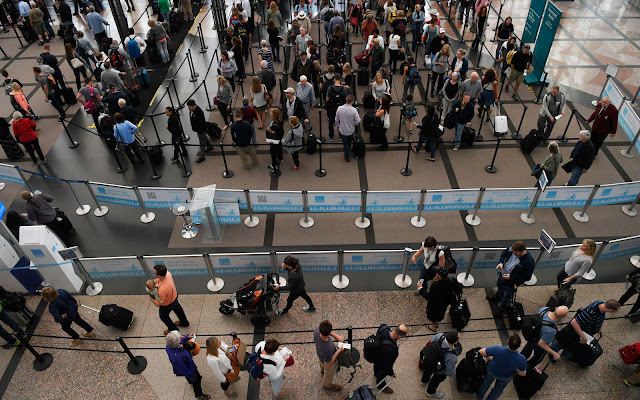



















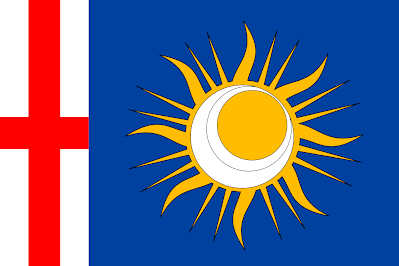
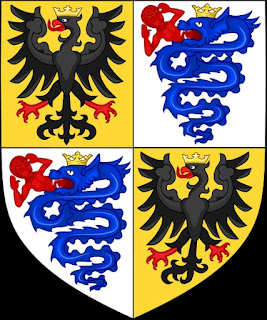



























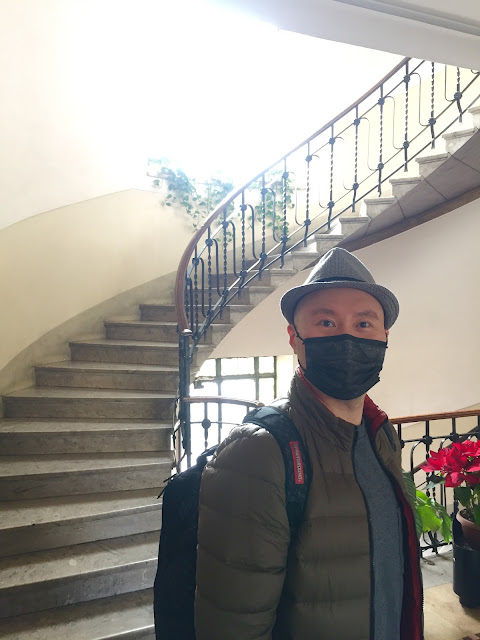






















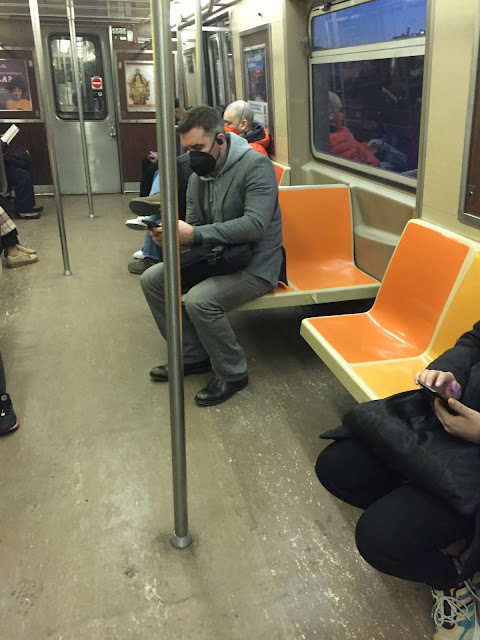



































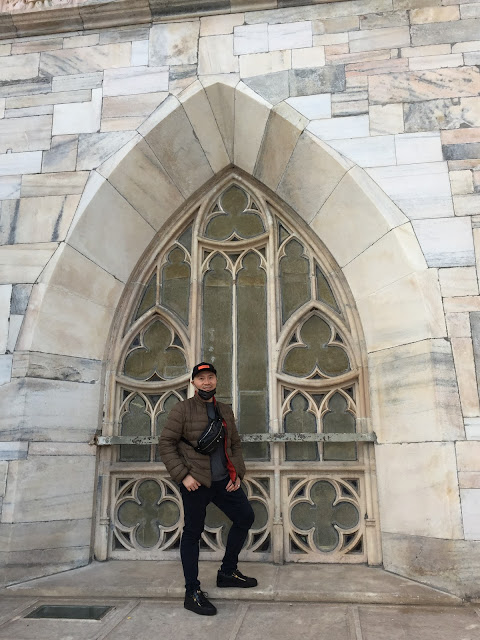









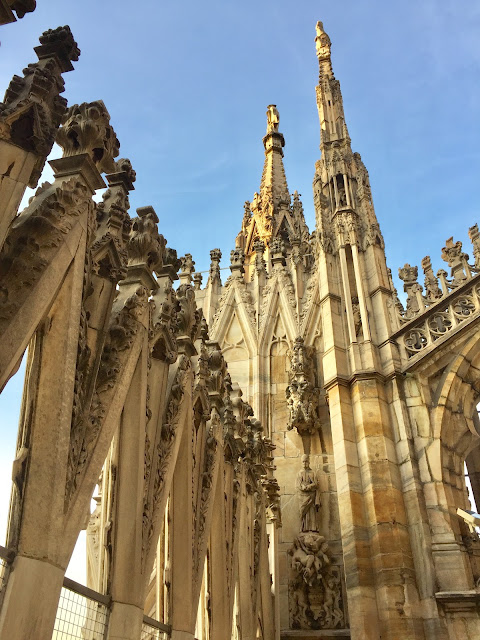














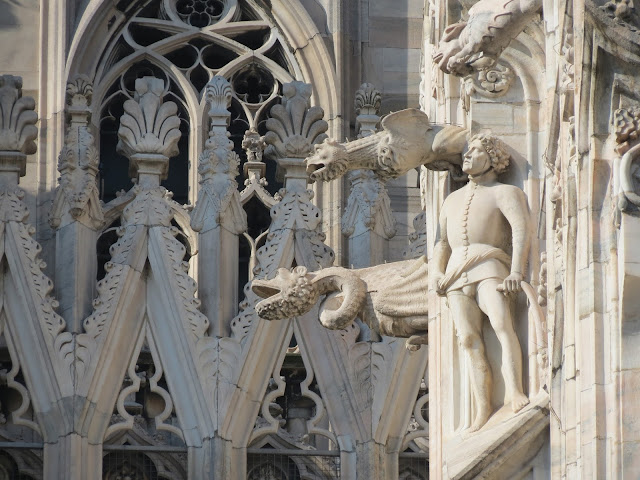































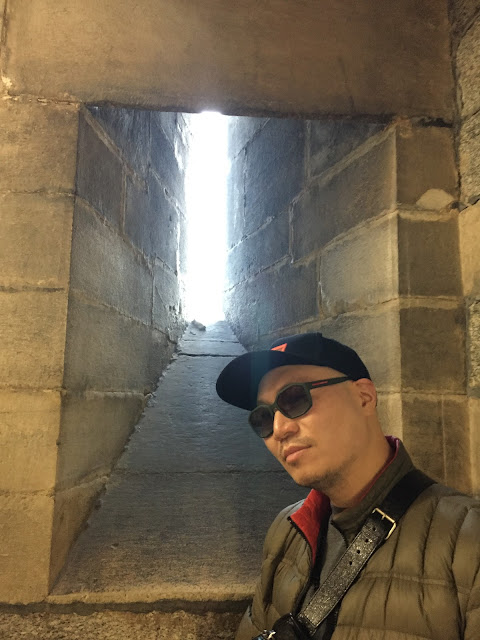














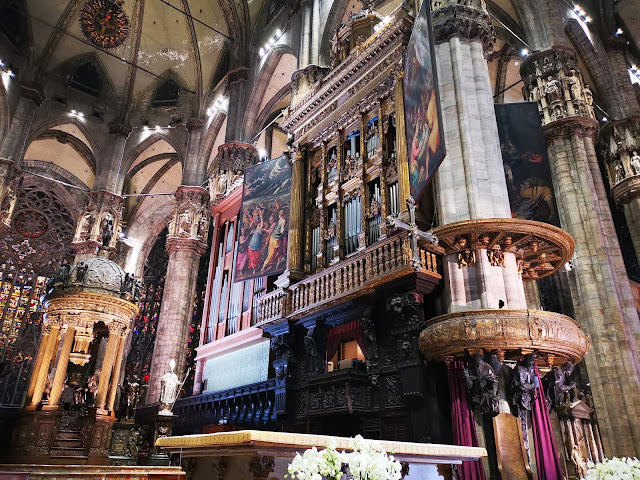











































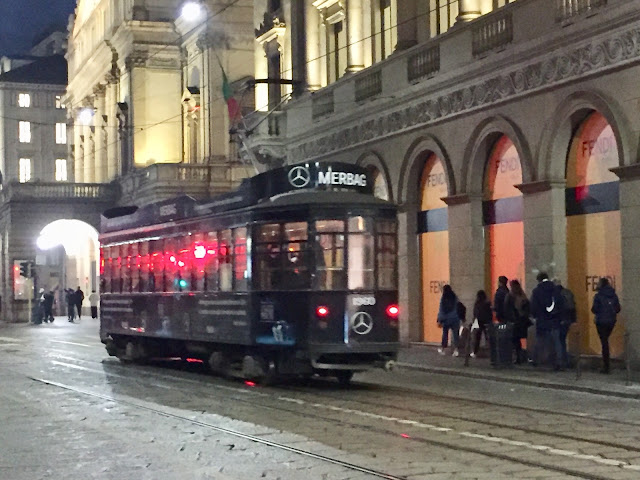














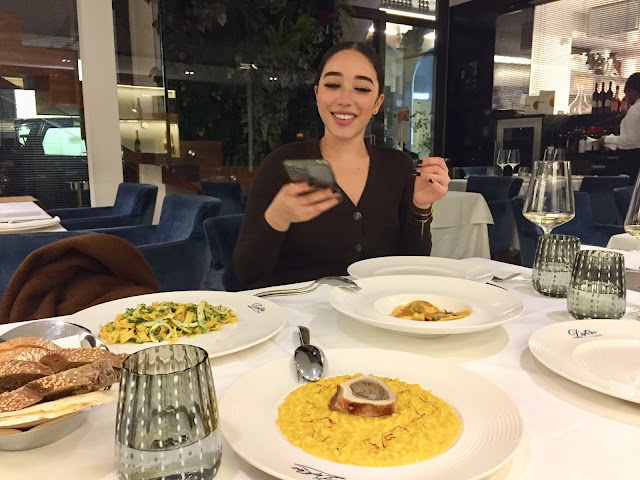






















































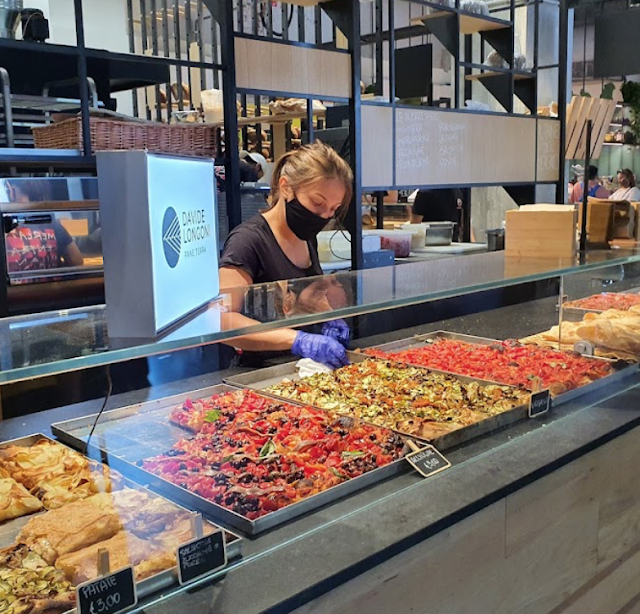





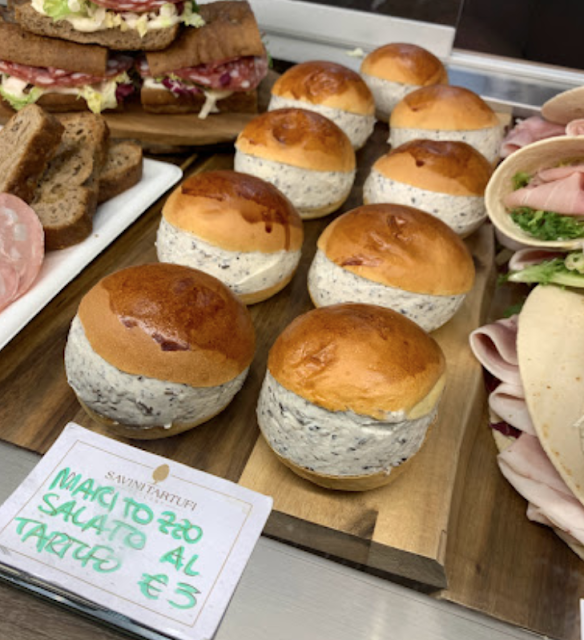































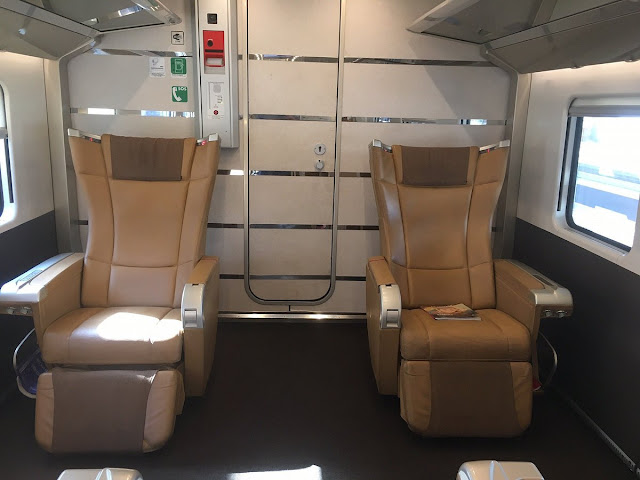






No comments:
Post a Comment
Don't be shy: leave your comments :)